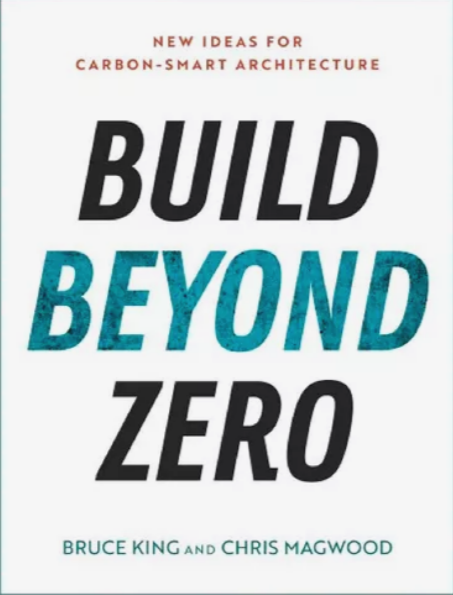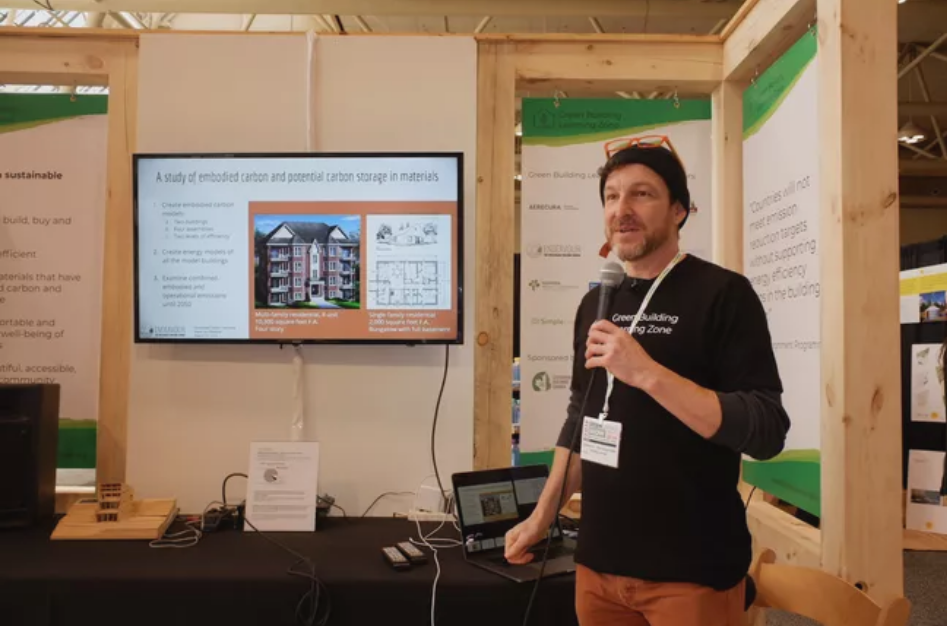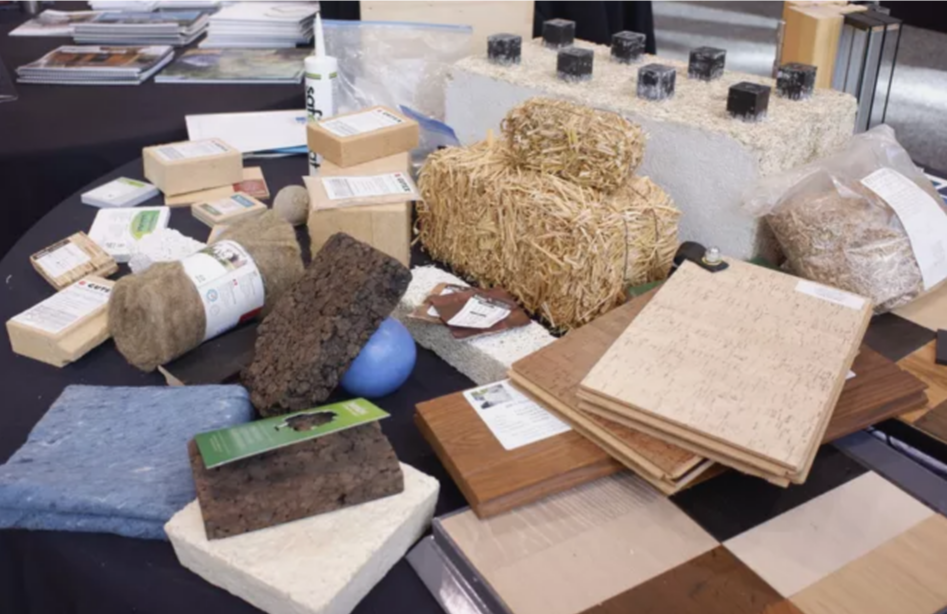
There are many builders who claim to be aiming for some definition of “net zero.” Bruce King and Chris Magwood start off their new book by stating that zero is not enough. In Build Beyond Zero: New Ideas for Carbon-Smart Architecture, they claim that our buildings should actually help repair the climate. They conclude the introduction by writing, “In this book, we invite you to imagine the very real potential for our built environment to be a site of net carbon storage–a massive drawdown pool that–along with intentional climate-positive efforts in every other sector of human endeavor–could heal our climate.”
King’s earlier book, The New Carbon Architecture promotes the concept of “building out of sky” using natural materials. Magwood is a visionary in the understanding of embodied carbon and is now working with The Endeavour Center after a career building with straw and other natural materials.
While the book will be useful to professionals—particularly those who have yet to wrap their heads around the concepts of embodied carbon and are looking for the words to explain it—it is written for a general audience. It does a great job of dealing with those whoops! moments when we realize everything we used to think was wrong. Magwood found that someone who was super-insulating with a foot of polyurethane foam was putting more greenhouse gases into the atmosphere than someone who didn’t insulate beyond basic code. The embodied or upfront carbon emissions can easily exceed the operating emissions.

The second big whoops! moment came with the realization of how important the time value of emissions is. They matter now when we have a carbon budget, a ceiling which we can’t blow through without blowing the 1.5 degrees Celsius heating of the planet. King and Magwood tell us we should be building out of materials that actually draw down the carbon from the atmosphere.
Most of the built environment biz hasn’t come to grips with either whoopsie, which is why we still have steel and glass towers being built, concrete highways, and 9,000-pound Hummer EVs.
The way we measure the carbon emissions from anything we make or build is to put it through a life cycle analysis (LCA), a technical procedure that King and Magwood explain well. They note that “conducting an LCA is an ambitious and fraught undertaking; with so many factors and variables at play, there is a lot of room for arguing and questioning results.”
The vast majority of embodied carbon emissions happen upfront, before the building is even occupied, which is why they are called upfront carbon emissions. But the bulk of those emissions happen in the raw materials, the product development, and manufacture—and these are the numbers that are easiest to quantify. Magwood calls these material carbon emissions (MCE).
King and Magwood note that “the front end matters, a lot.” We know what the numbers are, and more importantly, we know when the emissions are happening. So forget about life cycle analyses, we don’t have time; the front end matters most.
Biogenic carbon, which is absorbed by plants when they grow and emitted when trees and plants rot or burn, is also a subject I have had trouble explaining or even understanding. Many, including the IPCC, differentiate between “slow” carbon that comes from burning old plants that were turned into fossil fuels eons ago and “fast” carbon that comes from new plants, say less than 100 years old, that go through the natural carbon cycle.
King and Magwood explain: “”A large portion of the carbon we advocate storing in buildings comes from interrupting this cycle. We let biogenic materials draw down the CO2 as they have always done, but we don’t let all that carbon go back into the atmosphere. Instead, we put it away– bank it somewhere safe until we get our fossil fuel emissions under control. Buildings offer just such a durable place for biogenic carbon to remain out of the atmosphere.”

This is why the goal is “biological architecture,” buildings made of plants. But King and Magwood prefer little plants and note the problems with mass timber, including the fact that a lot of the wood doesn’t make it into the building, trees take a long time to grow, and mature, diverse forests store the most carbon. The little plants might be straw and stalks, fibers like hemp and jute, and materials like cork, pith, and even reeds and seaweed.
It’s not just the materials; we also need professionals and trades who know how to use them and regulations that permit them. We need a just transition because “building a better society means more than capturing carbon.”
You can read the original review at www.treehugger.com
